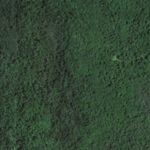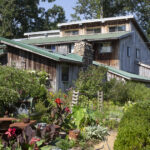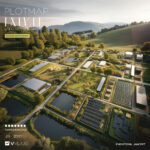Permaculture is a design system rooted in mimicking natural ecosystems to create sustainable, self-sufficient, and resilient landscapes. It integrates ethical principles and ecological design to foster biodiversity, regenerate soil, and promote healthy interactions between plants, animals, and humans. By implementing permaculture practices, individuals and communities can play a vital role in boosting local ecosystems.
Key Principles of Permaculture
- Observe and Interact: Understand the natural elements of your environment, such as soil, water, sunlight, and native species.
- Catch and Store Energy: Use resources efficiently, such as harvesting rainwater and installing solar panels.
- Produce No Waste: Incorporate composting and upcycling to minimize waste and recycle nutrients back into the soil.
- Integrate, Don’t Segregate: Foster mutually beneficial relationships between plants, animals, and humans.
- Use Small, Slow Solutions: Start with manageable projects and grow them organically.
Learn more about permaculture principles here.
Permaculture Practices to Enhance Local Ecosystems
- Soil Regeneration
- Composting: Turn organic waste into nutrient-rich compost for your soil.
- Mulching: Protect soil from erosion, retain moisture, and suppress weeds with organic materials.
- Hugelkultur: Build raised garden beds with buried wood to improve water retention and soil fertility.
- Green Manure: Grow nitrogen-fixing plants like clover and legumes to enrich the soil.
- For detailed soil-building techniques, visit Soil Food Web School.
- Water Management
- Rainwater Harvesting: Capture and store rainwater for irrigation and other uses.
- Swales: Design shallow trenches on slopes to slow water flow and increase soil absorption.
- Greywater Recycling: Reuse water from sinks and showers to hydrate plants safely.
- Learn how to manage water sustainably at Rainwater Harvesting Resources.
- Agroforestry and Food Forests
- Polyculture: Grow a mix of trees, shrubs, and plants that support each other.
- Layering: Mimic natural forests with layers like canopy, understory, and ground cover.
- Guilds: Group plants together that benefit one another (e.g., the “Three Sisters” of corn, beans, and squash).
- Find inspiration for agroforestry at Agroforestry.net.
- Wildlife Habitat Restoration
- Native Planting: Incorporate plants that are indigenous to the area to provide food and shelter for wildlife.
- Pollinator Pathways: Design gardens with flowering plants to support bees, butterflies, and other pollinators.
- Wetland Preservation: Conserve or restore wetland areas for birds, amphibians, and aquatic species.
- Learn more about native landscaping at Pollinator Partnership.
- Energy Conservation
- Passive Solar Design: Build structures that maximize natural heating and cooling.
- Energy-Efficient Systems: Use renewable energy sources like solar panels and wind turbines.
- Community Sharing: Reduce consumption by sharing tools, resources, and energy-efficient equipment.
- Explore renewable energy projects at National Renewable Energy Laboratory.
How Permaculture Boosts Ecosystems
- Biodiversity: Encourages diverse plant and animal species, which stabilizes ecosystems.
- Carbon Sequestration: Enhances soil’s ability to store carbon, helping mitigate climate change.
- Resilience: Creates systems that can adapt to environmental stressors like drought or pests.
Success Stories
- Zaytuna Farm (Australia): A world-renowned permaculture education site that demonstrates thriving ecosystems through agroforestry, water management, and regenerative farming.
- Tamera Peace Research Village (Portugal): Uses permaculture to restore barren land, increase biodiversity, and promote sustainable living.
Getting Started with Permaculture
Implementing permaculture begins with understanding your environment and starting small. Even a backyard garden can serve as a stepping stone to boosting your local ecosystem.
For more resources and inspiration, check out:





